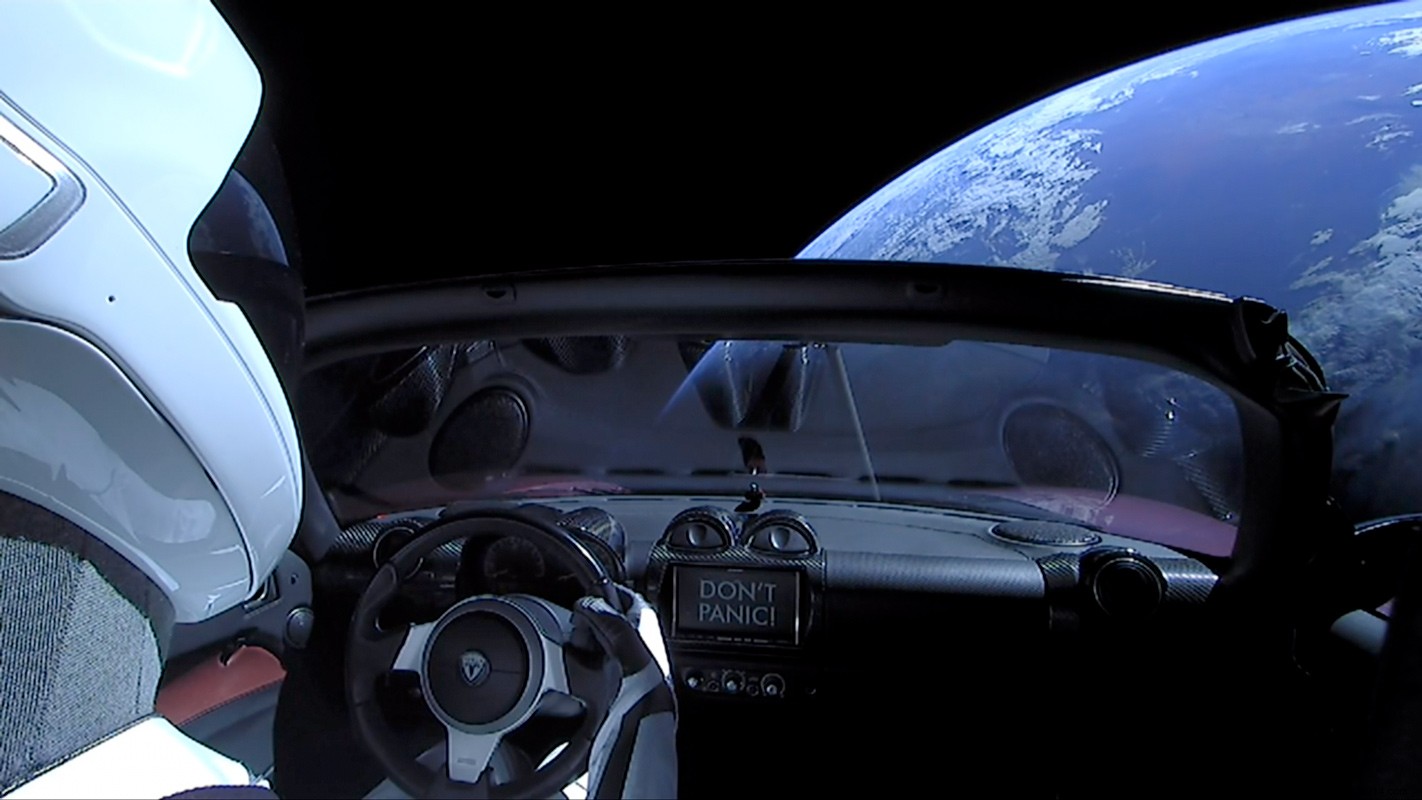Starting from Earth more than two years ago, Starman, installed in Elon Musk's Tesla Roadster, has since moved closer to the red planet. But he's just passing through.
It was February 2018. A Tesla Roadster, Elon Musk's personal car, was placed in orbit with a dummy at the wheel named Starman. A first payload like no other for the maiden voyage of SpaceX's gigantic Falcon Heavy rocket (and a nice publicity stunt for the Tesla brand). Since then, the vehicle and its driver have come a long way.
“Starman, last seen leaving Earth, made its first close approach to Mars today – at less than 0 .05 astronomical unit” , tweeted SpaceX this Wednesday, October 7. As a reminder, one astronomical unit is equivalent to the average Earth-Sun distance – about 150 million kilometers. In other words, the Tesla and its dummy approached about eight million kilometers from the red planet .
The Tesla always moves in an elliptical orbit, circling the Sun in 557 Earth days. According to tracking site whereisroadster.com, a platform for tracking Starman's adventures in real time, the car and its driver have so far traveled nearly 2.1 billion km in space. To give you an idea, it's as if this car had traveled all the roads of the Earth more than 57 times.

Difficult, without images, to estimate the degree of degradation of the car and its driver. Solar radiation and cosmic rays, which pose the biggest threat to the car's plastics, as well as its carbon fiber frame, have probably done a lot of damage.
“These materials consist largely of carbon-carbon bonds and carbon-hydrogen bonds, explained a few months ago the chemist William Carroll, of the University of Indiana (United States). The energy of stellar radiation can then crack these bonds. These organics, in this environment, I wouldn't even give them a year!" .
You will understand, after more than two years in space, it is very likely that there is not much left of the car. Even so, the duo (or what's left of it) will continue to "chop on interplanetary asphalt" for years to come. But for how long?
Hard to say. SpaceX initially predicted that its dummy would evolve in the solar system for about a billion years. It is also possible that the car will crash into Earth or Venus in a few tens of millions of years, according to a modeling study published in 2018. Nevertheless, the chances of this happening remain slim (between 2 and 6%, respectively). ).